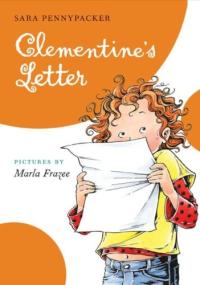Key Information
Focus
When To Use This Strategy
Appropriate Group Size
What are think-alouds?
Think-alouds have been described as “eavesdropping on someone’s thinking.” With this strategy, teachers verbalize aloud while reading a selection orally. During a think-aloud, you read a text aloud while verbalizing thoughts, predictions, questions, connections, and reflections. This helps students understand how to actively engage with the text, make inferences, and monitor their own comprehension.
Why use think-alouds?
- It helps students learn to monitor their thinking as they read and improves their comprehension.
- It teaches students to re-read a sentence, read ahead to clarify, and/or look for context clues to make sense of what they read.
- It slows down the reading process and allows students to monitor their understanding of a text.
- Consistent practice with think-alouds helps students internalize effective reading strategies and develop metacognitive skills.
- Encourages students to approach texts critically, fostering a deeper understanding of the material.
How to use think-alouds
- Explain to students what think-alouds are and why they are useful. Emphasize that it’s a strategy for thinking about and understanding a text while reading.
- Begin by modeling the strategy. Model your thinking as you read. Explicitly articulate your thinking process, making it clear how good readers engage with the text. Use phrases like “I’m thinking,” “I wonder,” or “This makes me think of…” Do this at points in the text that may be confusing for students (new vocabulary, unusual sentence construction).
- Introduce the assigned text and develop a set of questions to support thinking aloud (see examples below).
- What do I know about this topic?
- What do I think I will learn about this topic?
- Do I understand what I just read?
- Do I have a clear picture in my head about this information?
- What more can I do to understand this?
- What were the most important points in this reading?
- What new information did I learn?
- How does it fit in with what I already know?
- After the initial model, discuss specific reading strategies that students can use during think-alouds. These might include predicting, connecting, visualizing, questioning, summarizing, and monitoring comprehension.
- Give students opportunities to practice the technique, and offer structured feedback to students.
- Read the selected passage aloud as the students read the same text silently. At certain points stop and “think aloud” the answers to some preselected questions.
- Demonstrate how good readers monitor their understanding by rereading a sentence, reading ahead to clarify, and/or looking for context clues. Students then learn to offer answers to the questions as the teacher leads the think-aloud.
- After individual or group think-aloud activities, engage students in reflective discussions. Ask questions like, “What did you learn from your classmates’ think-alouds?” or “How did thinking aloud help you understand the text better?”
Watch a lesson on think-alouds (whole class)
Watch 4th grade teacher Clarissa Grimes lead her class in a think-aloud about a complex classroom text. Hear from the teacher, her students, and parents about how this strategy supports their learning. (Citizens Academy, Cleveland)
Watch a lesson on scaffolded read-alouds (whole class)
By reading books out loud every day, teachers introduce students to higher-level texts and new vocabulary, while modeling deeper thinking and strong discussion skills. (Edutopia)
Watch a teacher demonstration: modeling ways to think about text
A teacher think-aloud is an effective technique to model how to use comprehension strategies before, during, and after reading. (Balanced Literacy Diet: Putting Research into Practice in the Classroom)
Collect resources
Differentiate instruction
For second language learners, students of varying reading skill, and younger learners
- Have students do think-alouds in large or small groups; teacher and other students monitor and help.
- Ask students do think-alouds individually, and then compare with others. Students can write their own commentary.
- Complete, or have students complete, think-alouds orally, in writing, on an overhead, with Post-it notes, or in a journal.
Extend the learning
- Guidelines for Modeling and Thinking Aloud in Content Area Classrooms
- Sample Science and Math Think-Alouds (video from the Texas Education Agency)
See the research that supports this strategy
Davey, B. (1983). Think-aloud: Modeling the cognitive processes of reading comprehension. Journal of Reading, 27(1), 44-47.
Olshavsky, J. E. (1977). Reading as problem-solving: An Investigation of Strategies. Reading Research Quarterly, 12(4), 654-674.
Wilhelm, J. D. (2001). Improving Comprehension with Think-Aloud Strategies. New York: Scholastic Inc.
Children’s books to use with this strategy

Martin’s Big Words: The Life of Dr. Martin Luther King, Jr.

Clementine’s Letter

